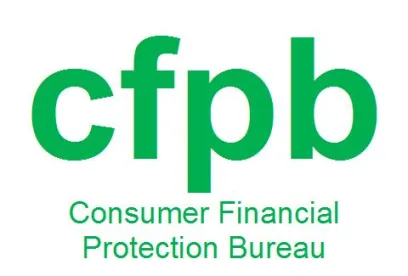The Consumer Financial Protection Bureau (“CFPB” or “Bureau”) has been an agency under fire.[1] Acting Director Mick Mulvaney has begun to institute significant changes at the Bureau.[2] And last year, a panel of the D.C. Circuit Court of Appeals held that the Bureau’s leadership structure – a single director who can be removed only for cause – violates the separation of powers requirement of Article II of the U.S. Constitution.[3] But in a long awaited en banc decision, the D.C. Circuit reversed that panel’s decision. Rather, in PHH Corp. v. Consumer Financial Protection Bureau,[4] the court held that the Bureau’s structure is consistent with separation of powers principles.[5] As discussed below, businesses subject to the CFPB’s supervisory and enforcement authority will need to continue to remain vigilant.
Background
In January 2014, the CFPB initiated an enforcement proceeding against mortgage services provider PHH Corporation (“PHH”). The Bureau alleged that PHH’s captive reinsurance program violated certain kickback provisions under Section 8 of the Real Estate Settlement Procedures Act (“RESPA”). The Bureau ordered PHH to pay a $109 million disgorgement penalty for the infractions.[6] PHH appealed the decision to the D.C. Circuit, asserting, among other matters, that the CFPB’s structure, whereby the director is removable by the president only for cause, was unconstitutional.[7]
In particular, PHH challenged Section 5491(c)(3) of the Dodd-Frank Wall Street Reform and Consumer Protection Act (“Dodd-Frank Act”), which established that the CFPB director may only be removed “for inefficiency, neglect of duty, or malfeasance in office.”[8] In other words, the president may only remove the sole director of the CFPB “for cause” as to opposed to “at will.”[9] PHH argued that this structure violates Article II separation of powers requirements because it impairs the president’s ability to exercise supervision and direction over the CFPB.[10] Through its challenge, PHH hoped to convince the D.C. Circuit that the CFPB never had the constitutional power to impose the $109 million penalty.
In 2016, a panel of the D.C. Circuit adopted PHH’s argument.[11] Circuit Judge Kavanaugh, writing for the majority, reasoned that the for-cause removal provision, coupled with the sole-directorship structure of the CFPB, did not provide acceptable executive oversight and was inconsistent with fundamental principles of liberty.[12] The court vacated the CFPB’s decision in the underlying enforcement action and determined that the Dodd-Frank Act must be modified to provide for at-will removal of the CFPB director by the president.[13] The CFPB filed a petition for rehearing en banc.
The En Banc Decision
The D.C. Circuit, sitting en banc, heard further argument in May 2017. PHH and numerous amici supporters (including the U.S. Department of Justice, writing on behalf of the U.S. government [14]) maintained that the CFPB’s sole-directorship structure, with a for-cause removal limitation, violated Article II. On January 31, 2018, the D.C. Circuit disagreed with them.
In the En Banc Decision, the majority held that the Article II question has nothing to do with the fact that the CFPB has only one director. Rather, the panel determined that the question is resolved by focusing simply on the language of the for-cause removal provision in Section 5491(c)(3) of the Dodd Frank Act. Because that same language (“inefficiency, neglect of duty, or malfeasance”) has already been approved by the Supreme Court in the seminal Article II case, Humphrey’s Executor v. United States, the court held that the president “retained ample tools” to supervise and direct the CFPB.[15] The court also held that, because the CFPB’s role as a financial regulator is not a “core executive function[],” there is no threat to the president’s powers or to the U.S. Constitution.[16] In this instance, the majority singled-out financial regulators as a whole, stating that “[t]he CFPB fits comfortably within precedent and tradition supporting the independence of the financial regulators that safeguard the economy.”[17] If the En Banc Decision is ultimately upheld, this special treatment of financial regulators could allow for increased autonomy of financial regulators down the road.
Parting with the majority, the dissenting members of the en banc court panel agreed with PHH that the CFPB’s structure was inconsistent with Article II requirements, offering two approaches for resolution of the issue. Circuit Judge Kavanaugh reaffirmed his position in line with the D.C. Circuit’s 2016 decision and reiterated that the removal clause should be severed from the Dodd-Frank Act.[18] This approach would allow the president to remove the CFPB director at will but the CFPB would otherwise remain intact as it currently exists. Conversely, Circuit Judge Henderson took a more aggressive approach, determining that Title X of the Dodd-Frank Act (i.e., the entirety of the CFPB portion of the legislation) should be stricken and Congress should be responsible for reconstructing legislation to create a proper, constitutional agency.[19] Certainly, these arguments will be raised by PHH if the decision is appealed to the Supreme Court.[20]
What Comes Next for the CFPB?
It is unclear whether PHH will petition for certiorari to the U.S. Supreme Court for review of the En Banc Decision’s ruling that the CFPB’s structure is constitutional. If the case does not progress to the Supreme Court, it will be remanded to the CFPB for further proceedings. And under the En Banc Decision, “to hold PHH liable” under RESPA Section 8, “the CFPB must … show that the … [amount] paid [for reinsurance is] more than reasonable market value….”[21] Meanwhile, the Bureau is currently without a Senate-confirmed director. Richard Cordray resigned as Director in November 2017 and nominated CFPB Deputy Director Leandra English as his successor. President Trump, however, appointed Director of the Office of Management and Budget Mick Mulvaney to serve as the Acting Director of the CFPB, a role in which he currently serves. At least one attempt to block Mr. Mulvaney’s appointment has been dismissed by the U. S. District Court for the Southern District of New York,[22] while Ms. English has her own suit pending in a D.C. federal court seeking court endorsement of her position as the rightful successor to the directorship.[23]
Acting Director Mulvaney, for his part, has already started to restructure the CFPB’s operations from within. Mr. Mulvaney announced in a recent email to CFPB staff that he intends to bring the CFPB’s Office of Fair Lending and Equal Opportunity under his direct oversight. Mr. Mulvaney has also taken steps to alter CFPB rulemaking, such as the CFPB’s “Payday Rule,” aimed at effecting a major overhaul of the small dollar lender industry.[24] On the rule’s effective date, Mr. Mulvaney announced that the CFPB “intends to engage in a rulemaking process so that the Bureau may reconsider the Payday Rule.”[25]
For regulated industry members, uncertainty regarding the depth and breadth of the CFPB’s activities continues to be the name of the game. But because the CFPB is likely here to stay in some manner, interested stakeholders may want to engage with the CFPB and Congress to advocate for their particular policy objectives.
Notes
[1] See K&L Gates Alert, Down But Not Out: The CFPB’s Future May Be Uncertain, But Industry Participants Must Remain Vigilant.
[2] See, e.g., Mick Mulvaney, The CFPB Has Pushed Its Last Envelope, Wall Street Journal, Jan. 23, 2018, https://financialservices.house.gov/news/documentsingle.aspx?DocumentID=402954.
[3] 839 F.3d 1 (D.C. Cir. 2016), vacated on other grounds by, No. 15-1177, 2018 WL 627055 (D.C. Cir. Jan. 31, 2018) (en banc).
[4] --- F.3d ----, 2018 WL 627055, No. 15-1177 (D.C. Cir. Jan. 31, 2018) (the “En Banc Decision”).
[5] The D.C. Circuit’s decision also breathed new life into the underlying three-judge panel’s decision regarding the proper interpretation of Section 8(c) the Real Estate Settlement Procedures Act (RESPA). For coverage of the effect of the D.C. Circuit’s decision as it pertains to RESPA, see K&L Gates Alert, Back from the Dead: The D.C. Circuit Breaths Life Into RESPA Section 8 Safe Harbor.
[6] Decision of the Director at 36-37, In re PHH Corp., No. 2014-CFPB-0002 (June 4, 2015), http://files.consumerfinance.gov/f/201506_cfpb_decision-by-director-cordray-redacted-226.pdf.
[7] See Brief for PHH at 45-46, PHH Corp. v. CFPB, No. 15-1177 (D.C. Cir. Sept. 28, 2015).
[8] 12 U.S.C. § 5491(c)(3).
[9] Id.
[10] See Brief for PHH at 45-46, PHH Corp. v. CFPB, No. 15-1177 (D.C. Cir. Sept. 28, 2015). According to PHH, the CFPB’s structure would comport with Article II if: (1) the CFPB director were removable at will by the president; or (2) the CFPB were restructured as a bi-partisan, multi-member commission (along the lines of the Securities and Exchange Commission or the Federal Trade Commission). Id.
[11] 839 F.3d 1 at 36-39.
[12] Id. at 36.
[13] Id. at 39.
[14] See Brief for the United States as Amicus Curiae, PHH Corp. v. CFPB, No. 15-1177 (D.C. Cir. March 17, 2017).
[15] En Banc Decision, 2018 WL 627055, at *6. In Humphrey’s Executor, the Supreme Court determined that the power held by the commissioners of the FTC did not violate the Constitution’s separation of powers requirement even though the commissioners were not removable at will by the president. Humphrey's Executor v. U.S., 295 U.S. 602, 623-26 (1935) (concerning the president’s power to remove commissioners of the FTC).
[16] En Banc Decision, 2018 WL 627055, at *6.
[17] Id. at *16.
[18] Id. at *102 (Kavanaugh, J., dissenting).
[19] Id. at *67 (Henderson, J., dissenting).
[20] Circuit Judge Randolph wrote a third dissenting opinion addressing an alternative Article II question focused on the constitutional authority of the administrative law judge who wrote the initial decision of the CFPB. Id. at *102-04 (Randolph, J. dissenting). Circuit Judge Randolph concluded that the case should not be remanded to the CFPB until the Supreme Court decides Lucia v. SEC, a case that will presumably resolve that alternative Article II issue. Id. The Supreme Court granted certiorari in the Lucia case on January 12, 2018. Lucia v. SEC, No. 17-130, 2018 WL 386565 (S. Ct. Jan. 12, 2018). The Article II issue in Lucia, whether administrative law judges are inferior officers, or simply employees of their respective agencies, was not addressed in the En Banc Decision.
[21] En Banc Decision, 2018 WL 627055, at *6 (reinstating panel’s holding regarding interpretation of RESPA and instructions on remand to the CFPB); see PHH, 839 F.3d at 44 (“On remand, the CFPB may determine whether the relevant mortgage insurers in fact paid more than reasonable market value to the reinsurer … for the reinsurance.”).
[22] See Memorandum Opinion & Order, Lower East Side People’s Fed. Credit Union v. Trump, No. 17-09536 (S.D.N.Y. Feb. 2, 2018), ECF No. 54.
[23] See English v. Trump, No. 17-02534 (D.D.C.).
[24] See K&L Gates LLP Alert, Payday Loan Rule Finalized: “Ability to Repay” Requirements Narrowed, but Challenges and Risks Loom Large.
[25] See K&L Gates LLP Consumer Financial Services Blog, Payday Loan Rule Is Officially A Go - Or Is It? and Payday Loan Rule to Be Officially Reconsidered.







 />i
/>i

